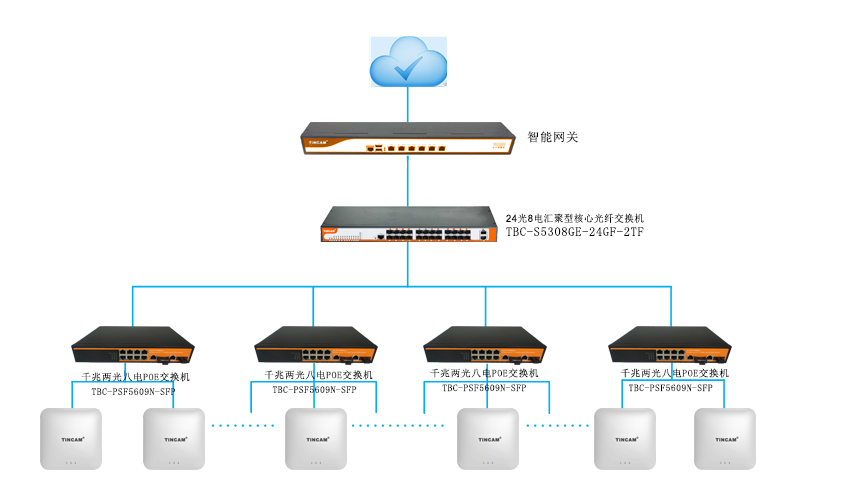AP is a wireless access point, not including wireless bridges and wireless routers, and wireless routers are not integrated products of wireless access points and routers. Not only are wireless access points more powerful than wireless routers, but applications are not used. Similarly, wireless access point applications are generally commercial, and wireless routers are only for home use.
Let's take a look at the difference between wireless AP and wireless router!

Functionally distinguish
Wireless AP is the abbreviation of Access Point, which can be translated as "wireless access node". It mainly provides wireless workstations access to wired LANs and wireless routers from wired LANs. Wireless workstations within the coverage of access points can pass through it. Communicate with each other. Generally speaking, wireless AP is a bridge between wireless network and wired network. Due to the difference between wireless wireless AP and wireless router
The coverage of the AP is a circular area that is outwardly diffused. Therefore, the wireless AP should be placed in the center of the wireless network as much as possible, and the linear distance between each wireless client and the wireless AP should not exceed 30 meters to avoid communication signals. Too much attenuation causes communication to fail.
Wireless router: A wireless router is a combination of a simple AP and a broadband router; it can realize Internet connection sharing in a home wireless network by means of a router function, realize wireless shared access of ADSL and community broadband, and wireless router Terminals through which both wireless and wired connections can be assigned can be assigned to a subnet so that various devices within the subnet can exchange data conveniently.
It can be said that the wireless router is a collection of APs, routing functions and switches, supporting wired and wireless to form the same subnet, and directly connected to the MODEM. A wireless AP is equivalent to a wireless switch, connected to a wired switch or router, and the IP card connected to it is assigned to the IP card from the router.
Differentiate from application
Standalone APs are used more often by companies that require large numbers of APs for large-area coverage. All APs are connected via Ethernet and connected to a separate WLAN firewall.
Wireless routers are used more in SOHO environments. In this environment, an AP is sufficient. In this case, a wireless router that integrates a broadband access router and an AP provides a single machine solution that is easier to manage and cheaper than a two separate machine solution. Wireless routers typically include a Network Address Translation (NAT) protocol to support wireless LAN users' network connection sharing - a feature that is well-used in SOHO environments. They may also have basic firewalls or information filters to prevent port scanning software and other attacks against broadband connections. Finally, most wireless routers include a four-port Ethernet converter that can connect to several wired PCs. This is very convenient for managing a router or connecting a printer to a LAN.
Analysis from the network topology map
The AP cannot be directly connected to the ADSL MODEM, so you must add another switch or hub when you use it: When using the above topology, the AP and the wireless route are used in the same way. However, most wireless routers have broadband dialing capabilities, so they can connect directly to ADSL MODEM for broadband sharing.
Analyze from the cost
The price of 802.11B wireless AP and wireless router is similar, the general wireless router will cost about 100 yuan; 802.11G depends on the specific situation, depending on the brand and additional functions, the price will be several hundred yuan. The gap, but the price difference of cheap products is also more than 100 yuan.
Wireless AP application diagram:

Chair Accessories,Chair Legs Mold,Mold Chair Legs,Die Casting Chair Legs
Ningbo Jinyao Machinery Company. LTD , https://www.cardiecastingmold.com
![<?echo $_SERVER['SERVER_NAME'];?>](/template/twentyseventeen/skin/images/header.jpg)